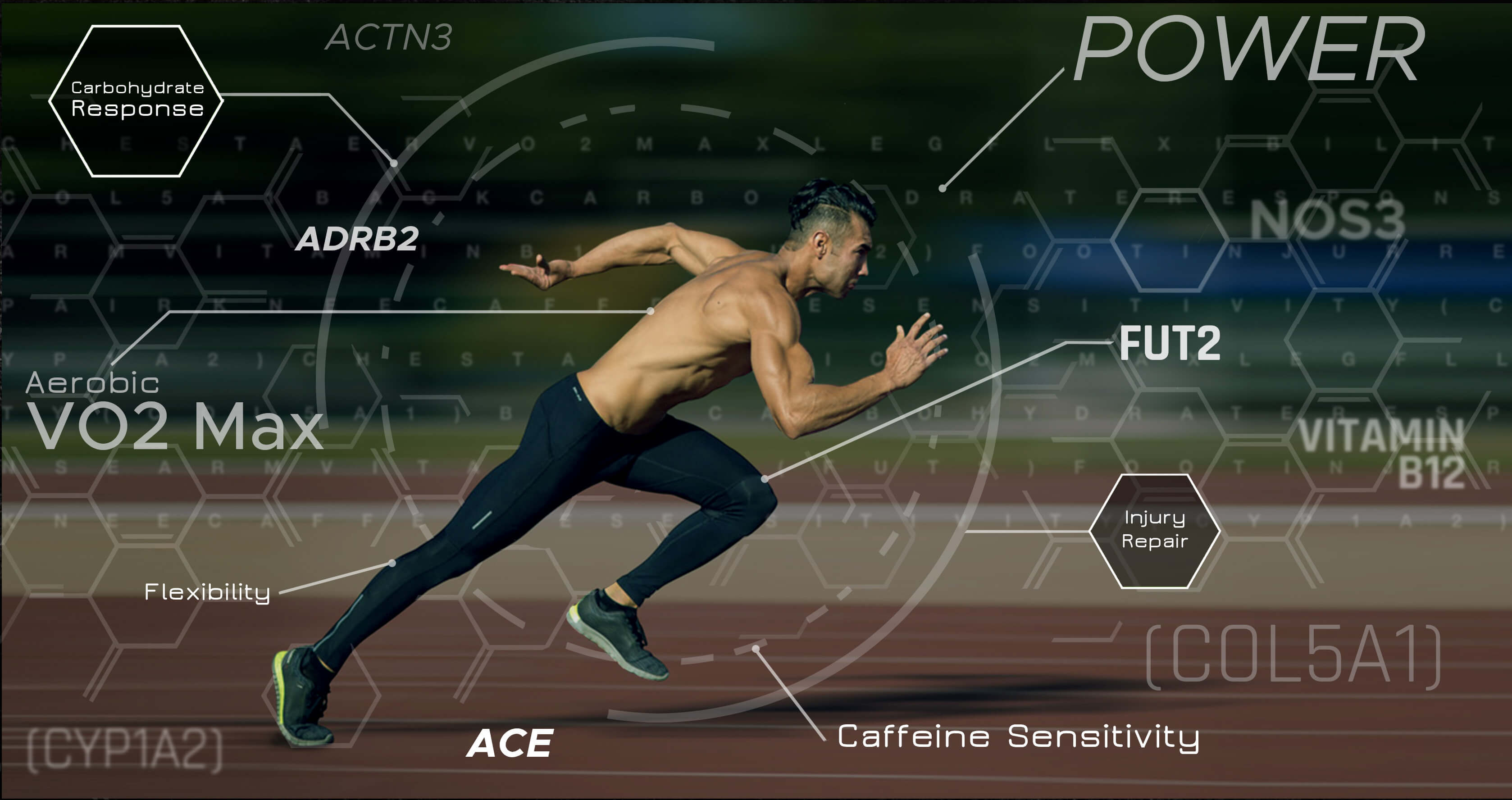Home>Misc>Featured>What Assessment Measures Overall Strength Stability Muscular Endurance And Agility?


Featured
What Assessment Measures Overall Strength Stability Muscular Endurance And Agility?
Modified: October 24, 2023
Discover how our featured assessment measures overall strength, stability, muscular endurance, and agility to help you excel in your fitness goals.
Introduction
Welcome to the world of fitness assessments! If you are serious about your fitness journey, then you know that measuring your progress is essential. Understanding your overall strength, stability, muscular endurance, and agility can provide valuable insights into your fitness level and help you tailor your workout routine accordingly.
Assessments play a crucial role in determining where you stand and what areas you need to focus on in order to achieve your goals. By identifying your strengths and weaknesses, you can design a training program that is specifically tailored to your needs, maximizing your chances of success.
But with so many assessment options available, how do you know which ones to choose? In this article, we will explore the various types of assessments that measure overall strength, stability, muscular endurance, and agility. Understanding the purpose and benefits of each assessment will enable you to make informed decisions and create a comprehensive fitness plan.
Whether you are a professional athlete, a fitness enthusiast looking to improve your performance, or someone simply wanting to stay healthy and active, this article will serve as your guide to finding the assessments that are most relevant to your goals. So, let’s dive in and discover the incredible world of fitness assessments!
Understanding the Importance of Assessing Overall Strength, Stability, Muscular Endurance, and Agility
Assessing your overall strength, stability, muscular endurance, and agility is crucial for several reasons. Firstly, these assessments provide a baseline measurement of your current fitness level. By understanding where you stand in terms of these components, you can set realistic goals and track your progress over time.
Additionally, assessing your strength, stability, muscular endurance, and agility can help you identify any muscle imbalances or asymmetries in your body. These imbalances can lead to poor movement patterns and increase the risk of injuries. By pinpointing these weaknesses, you can work on correcting them, improving your overall movement quality, and reducing the likelihood of getting injured.
Moreover, these assessments provide valuable feedback on your training program’s effectiveness. If you have been consistently working on strength training but notice little improvement in your overall strength, it may be time to reassess your approach and make necessary adjustments to ensure progressive overload and optimal muscle development.
Furthermore, understanding your overall strength, stability, muscular endurance, and agility can aid in setting realistic expectations for specific activities or sports. If you participate in activities that require high levels of agility, such as basketball or soccer, assessing your agility can give you insight into your performance potential and indicate areas for improvement.
Overall, assessing these components of fitness helps you gain a holistic understanding of your body’s capabilities and limitations. It allows you to tailor your training regimen to address specific weaknesses and optimize your performance in activities you enjoy.
By regularly assessing your overall strength, stability, muscular endurance, and agility, you can stay motivated, track your progress, identify areas for improvement, and ultimately achieve your fitness goals. So, let’s explore the different types of assessments available to measure these qualities and unlock your true fitness potential!
Different Types of Assessments for Overall Strength, Stability, Muscular Endurance, and Agility
When it comes to assessing overall strength, stability, muscular endurance, and agility, there are various types of assessments to choose from. Each assessment focuses on different aspects of fitness and provides valuable information about your body’s capabilities. Let’s take a closer look at some of the most common assessments:
1. Strength Assessment: This assessment measures your maximal strength in specific exercises such as the bench press, squat, or deadlift. It helps you understand how much force your muscles can generate and provides a benchmark for tracking progress in your strength training program.
2. Stability Assessment: Stability assessments evaluate your ability to maintain proper alignment and control during movement. They often involve exercises that challenge your balance and core strength, such as single-leg balance, plank variations, or dynamic movements on unstable surfaces. These assessments help identify areas of weakness and guide targeted stability training.
3. Muscular Endurance Assessment: Muscular endurance assessments assess the ability of your muscles to sustain contractions over an extended period. Examples include timed push-ups, sit-ups, or holding a plank for as long as possible. These assessments reflect your ability to perform multiple repetitions or hold positions without fatigue and can guide the development of endurance-focused workout routines.
4. Agility Assessment: Agility assessments measure your ability to change direction quickly, accelerate, decelerate, and display coordinated movement. They often involve timed drills such as shuttle runs, cone drills, or ladder exercises. Agility assessments can be particularly relevant for sports that require quick changes in direction and speed.
Remember that these assessments are not mutually exclusive, and you can tailor them to suit your specific needs. Additionally, it is essential to note that these assessments should be performed under the guidance of a qualified professional to ensure correct technique and minimize the risk of injury.
By incorporating a combination of these assessments into your fitness routine, you can gain valuable insights into your overall strength, stability, muscular endurance, and agility. This knowledge empowers you to design a targeted training program that addresses your specific strengths and weaknesses, helping you reach your fitness goals more effectively.
So, let’s move on to the next section and learn how to choose the right assessment for your needs!
Strength Assessment
In the realm of fitness assessments, measuring your strength is crucial to understanding your muscular capabilities and designing an effective training program. Strength assessments typically focus on measuring your maximal strength in specific exercises such as the bench press, squat, or deadlift.
There are various ways to assess strength, but one common method is performing a one-repetition maximum (1RM) test. This involves determining the maximum weight you can lift for a single repetition of a particular exercise with proper form. By testing your 1RM, you can establish a baseline for tracking your progress and evaluating the efficacy of your strength training program.
Strength assessments can be performed using free weights, machines, or bodyweight exercises, depending on the equipment available and your fitness level. It’s important to note that performing strength assessments requires proper technique and safety precautions. It is advisable to seek guidance from a qualified fitness professional to ensure correct execution and reduce the risk of injury.
Strength assessments not only provide insights into your current strength levels, but they also help identify any muscle imbalances or weaknesses. For example, if you find that your lower body is significantly stronger than your upper body, this information can guide you towards incorporating targeted exercises to improve your upper body strength.
Moreover, tracking your strength progress over time can be highly motivating. Seeing the numbers go up as you gradually increase the weights you lift can inspire you to push harder and set new goals. It also allows you to objectively measure your progress and adjust your training program as needed to continue making gains.
Strength assessments can be valuable for individuals across different fitness levels, from beginners starting their strength training journey to advanced athletes looking to enhance their performance. By incorporating strength assessments into your routine, you can gain a deeper understanding of your muscular capabilities and tailor your training program to maximize your strength gains.
Remember that strength assessments should be performed with caution and preferably under the supervision of a qualified fitness professional. They are just one piece of the puzzle when it comes to assessing your overall fitness. In the next section, we will explore stability assessments, which play a crucial role in maintaining proper movement mechanics and reducing the risk of injuries.
Stability Assessment
Stability is a fundamental aspect of fitness that plays a vital role in maintaining proper movement mechanics and reducing the risk of injuries. Stability assessments focus on evaluating your ability to maintain proper alignment and control during various movements and exercises.
Stability assessments often involve exercises that challenge your balance, core strength, and proprioception. These assessments can range from simple tasks such as standing on one leg or holding a plank to more dynamic movements on unstable surfaces like balance boards or exercise balls.
One commonly used stability assessment is the Single Leg Balance Test. In this test, you stand on one leg and attempt to maintain your balance for a specific period of time. The longer you can maintain stability without touching the ground or losing control, the better your stability is considered to be.
Other stability assessments may include exercises like the Y-Balance Test, which assesses your dynamic balance and movement asymmetries, or the Functional Movement Screen (FMS), which evaluates your movement patterns and identifies any limitations or dysfunctions.
Stability assessments are crucial because they help identify any weaknesses or imbalances in your body. These imbalances can lead to compensatory movements and increase the risk of injuries. By pinpointing these areas of weakness, you can work on correcting them through targeted stability training exercises.
Incorporating stability training into your routine can have numerous benefits. It can improve your overall movement quality, enhance your athletic performance, and reduce the risk of injuries. By improving your stability, you will have a solid foundation for other physical activities and exercises, leading to better results and a reduced chance of setbacks.
Additionally, stability assessments provide valuable feedback on the effectiveness of your training program. If you notice that your stability is lacking in certain areas, it may be an indication that you need to focus more on exercises that target those specific muscles or movement patterns. This targeted approach can help you address any weaknesses and improve your overall stability.
Remember, stability assessments should be performed under the guidance of a qualified professional who can ensure correct technique and provide appropriate progressions based on your current fitness level. By incorporating stability assessments into your routine, you can identify areas for improvement and lay the foundation for a strong, stable, and injury-free body.
In the next section, we will explore muscular endurance assessments, which assess your ability to sustain contractions over an extended period and are crucial for activities that require stamina or repetitive movements.
Muscular Endurance Assessment
Muscular endurance is a critical component of fitness that assesses your muscles’ ability to sustain contractions over an extended period. Muscular endurance assessments are essential for activities that require stamina or repetitive movements, such as distance running, cycling, or swimming.
One common way to assess muscular endurance is through timed exercises or repetitions. For example, a push-up or sit-up test measures how many repetitions you can perform within a specific time frame, such as one minute. The longer you can sustain the activity without fatigue, the better your muscular endurance is considered to be.
These assessments can be tailored to target specific muscle groups or movements. For example, a plank hold assesses your core endurance, while a wall sit test evaluates the endurance of your lower body muscles.
By assessing your muscular endurance, you can determine the effectiveness of your training program and identify areas for improvement. If you notice a plateau in your muscular endurance results, it may indicate the need to incorporate more endurance-focused exercises or increase the intensity or duration of your current training regimen.
Muscular endurance assessments are not limited to traditional exercises. They can also be sport-specific, mimicking the movements required in your chosen activity. For example, a basketball player may perform a shooting drill continuously for a set duration to assess their shooting endurance and ability to maintain accuracy under fatigue.
Improving your muscular endurance has various benefits. It allows you to perform activities with less fatigue, enhances your performance in endurance-based sports, and increases your overall stamina. Additionally, muscular endurance assessments can serve as motivation and provide tangible goals to work towards.
It’s essential to progress gradually when incorporating muscular endurance assessments into your routine. It is advisable to start with a baseline assessment and gradually increase the duration or repetitions over time. This approach prevents overexertion and reduces the risk of overuse injuries.
Remember that muscular endurance assessments should be performed with proper technique, and it is important to listen to your body and stop if you experience any pain or discomfort. If you are unsure about the most appropriate assessment methods or exercise selection, seek guidance from a qualified fitness professional.
In the next section, we will delve into agility assessments, which evaluate your ability to change direction, accelerate, and display coordinated movement – essential for sports that require quick changes in direction and speed.
Agility Assessment
Agility is a crucial component of fitness that measures your ability to change direction, accelerate, decelerate, and display coordinated movement. Agility assessments are particularly relevant for sports and activities that require quick changes in direction, speed, and reaction time.
Agility assessments often involve timed drills that challenge your ability to move efficiently and with precision. Some common agility assessments include shuttle runs, cone drills, ladder exercises, or agility ladder drills. These drills require you to navigate through a series of obstacles or markers, mimicking the movements required in sports like soccer, basketball, and tennis.
During agility assessments, your speed, coordination, reaction time, and agility are measured. The goal is to complete the drills as quickly as possible while maintaining control and accuracy of movements. The time it takes to complete the drills can be used as a benchmark for tracking progress over time.
Agility assessments can reveal any areas of weakness or inefficiency in your movement patterns. If you notice that you struggle with quick changes in direction or have difficulty with lateral movements, it may indicate a need to focus on exercises targeting agility and quickness.
Incorporating agility drills into your training routine can enhance your sports performance, as well as improve your overall movement skills. Improved agility allows you to react quickly on the field or court, evade opponents, and maintain better control over your body.
Furthermore, agility assessments provide valuable feedback on your coordination and spatial awareness. By practicing agility drills and regularly assessing your performance, you can become more aware of your body’s position in space, improving your overall balance and proprioception.
It is important to note that agility assessments should be performed with proper technique and safety precautions to prevent injuries. Begin with a warm-up to prepare your muscles for the explosive movements required during agility drills. If you are unsure about the correct form or progression of agility exercises, consult a qualified fitness professional.
Agility assessments are not limited to athletes; they can be beneficial for individuals of all fitness levels who want to improve their overall coordination, quickness, and reaction time. By incorporating agility assessments and specific agility training exercises into your routine, you can unlock your potential for quick and precise movements.
Now that you understand the importance of agility assessments, let’s move on to the next section, where we will discuss how to choose the right assessments for your individual needs.
Choosing the Right Assessment for Your Needs
With multiple assessments available to measure overall strength, stability, muscular endurance, and agility, it can be challenging to determine which ones are most relevant to your goals and fitness level. Choosing the right assessment requires consideration of your specific needs, interests, and fitness priorities.
Firstly, identify your primary fitness goals. Are you looking to improve your strength for powerlifting competitions, enhance your stability for injury prevention, build muscular endurance for long-distance running, or develop agility for sports performance? Understanding your goals will help you select assessments that align with your desired outcomes.
Consider your current fitness level and experience. Some assessments may be more suitable for beginners, while others may be more challenging and appropriate for advanced individuals. Assessments should push you out of your comfort zone but not exceed your physical capabilities or risk injury. If you’re uncertain about which assessments are appropriate for your fitness level, consult a fitness professional for guidance.
Think about your interests and preferences. If you enjoy specific activities or sports, selecting assessments that are directly related to those activities can provide more meaningful and enjoyable results. For example, if you love playing basketball, incorporating agility assessments that mimic basketball movements can give you valuable insights into your performance potential and areas for improvement.
Consider the resources available to you. Some assessments may require specialized equipment or access to certain facilities. If you do not have access to specific equipment or facilities, look for alternatives or modifications that can still provide similar insights. Remember, simplicity is often effective, and you can achieve meaningful results with minimal equipment.
Consult with a qualified fitness professional to ensure correct execution of assessments and interpretation of results. They can guide you in selecting the most relevant assessments based on your individual needs and provide insights on how to improve your performance based on the results.
Lastly, remember that assessments are not a one-time event. Regularly reassessing your strength, stability, muscular endurance, and agility will allow you to track progress, make adjustments to your training program, and set new goals. Assessments should be used as a tool for continual improvement and motivation on your fitness journey.
By choosing the assessments that align with your goals, fitness level, interests, and resources, you can gain valuable insights into your overall fitness and design a targeted training program. So, take the time to select the right assessments and embark on a path of growth and achievement.
Conclusion
Assessing your overall strength, stability, muscular endurance, and agility is essential for anyone on a fitness journey. These assessments provide valuable information about your current fitness level, help identify weaknesses or imbalances, and guide the development of a targeted training program.
Strength assessments give you insights into your maximal strength and allow you to track progress over time. Stability assessments help you identify any movement imbalances and reduce the risk of injuries. Muscular endurance assessments assess your ability to sustain contractions over time, important for activities that require stamina. Agility assessments focus on quick changes in direction, speed, and reaction time, vital for sports and dynamic movements.
By selecting the right assessments based on your goals, fitness level, interests, and available resources, you can gain valuable insights and tailor your training program effectively. Assessments should be performed with proper technique and under the guidance of a qualified fitness professional.
Remember, assessments are not a one-time event. Continually reassessing your strength, stability, muscular endurance, and agility allows you to track progress, make adjustments to your training program, and set new goals. Regular assessments serve as a tool for motivation and continual improvement on your fitness journey.
So, embrace the power of assessments and unlock your true fitness potential. Whether you’re an athlete striving for peak performance or someone looking to improve their overall health and well-being, incorporating assessments into your fitness routine will set you on the path to success.
Now, go out there, assess your fitness, and strive for greatness!









